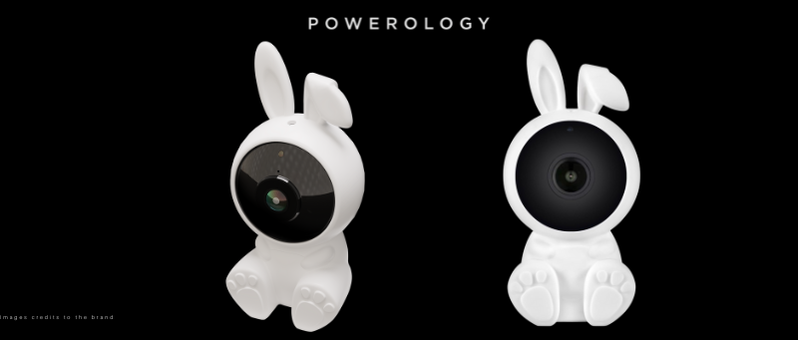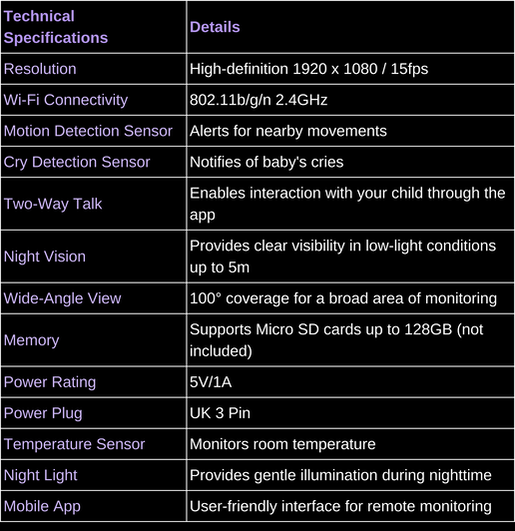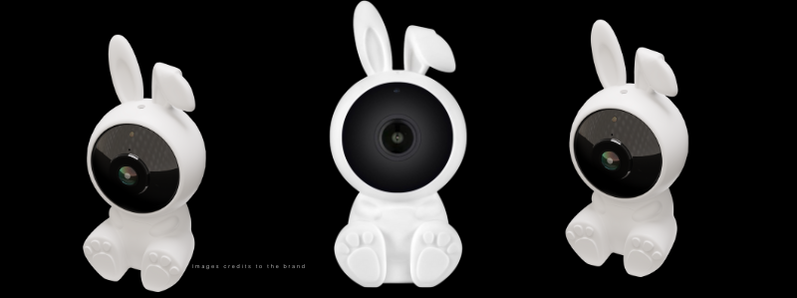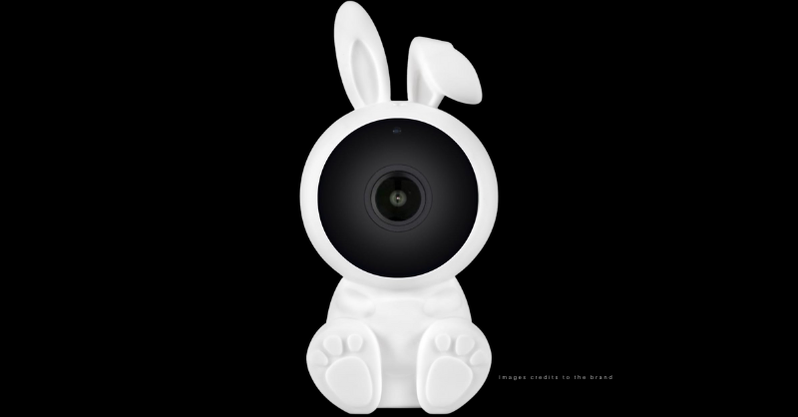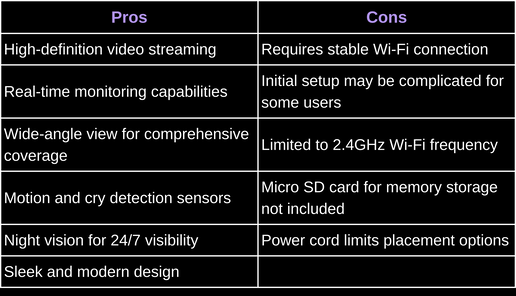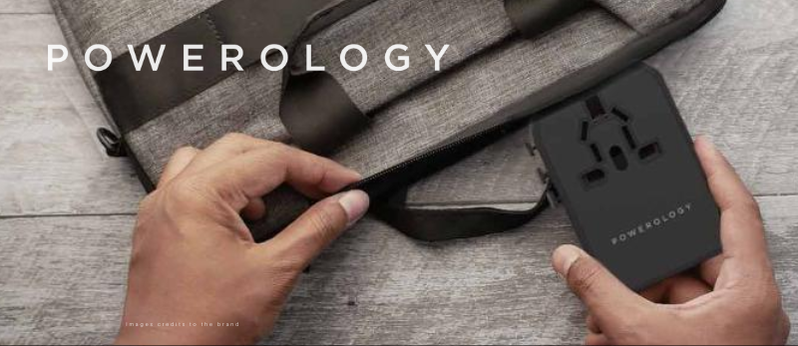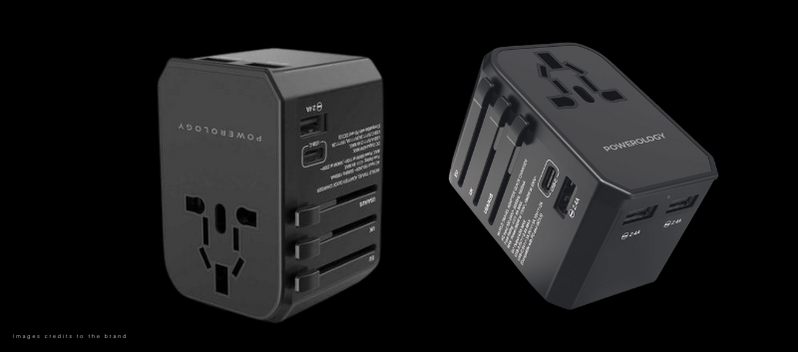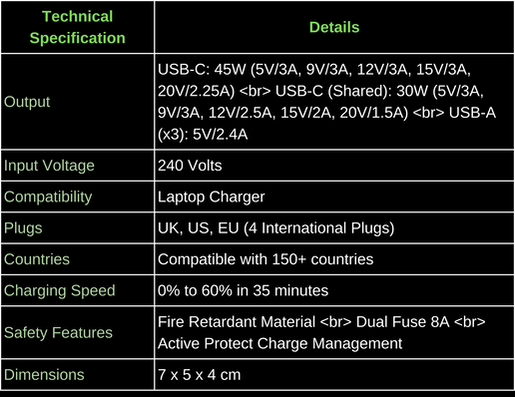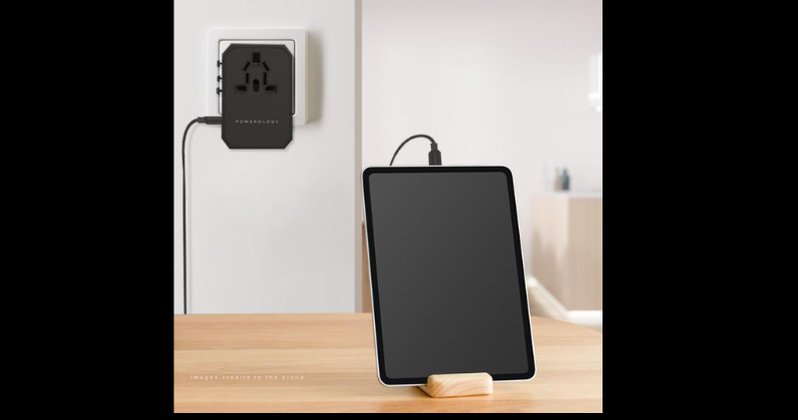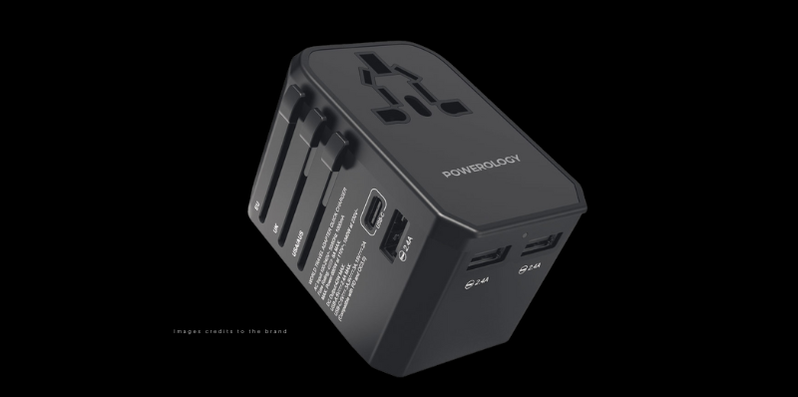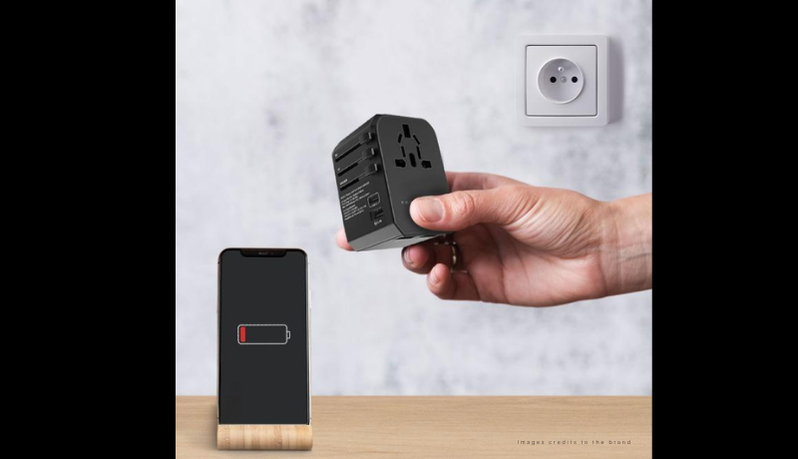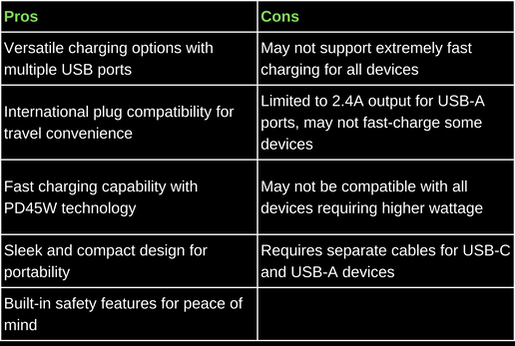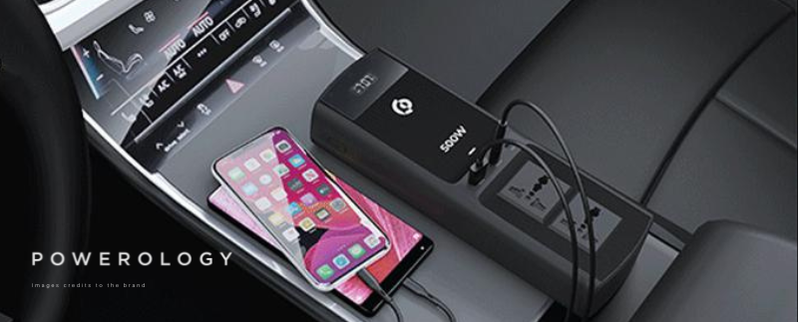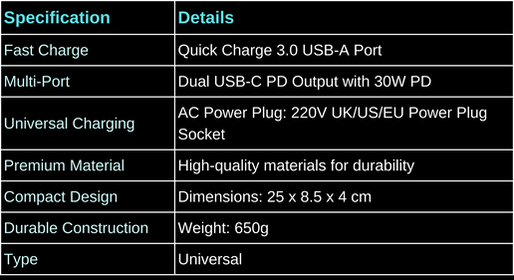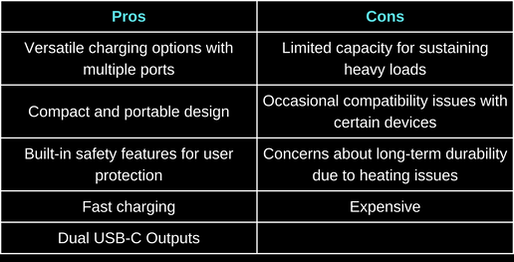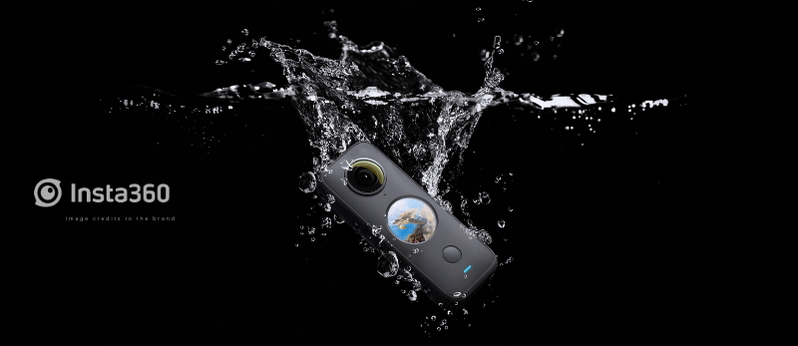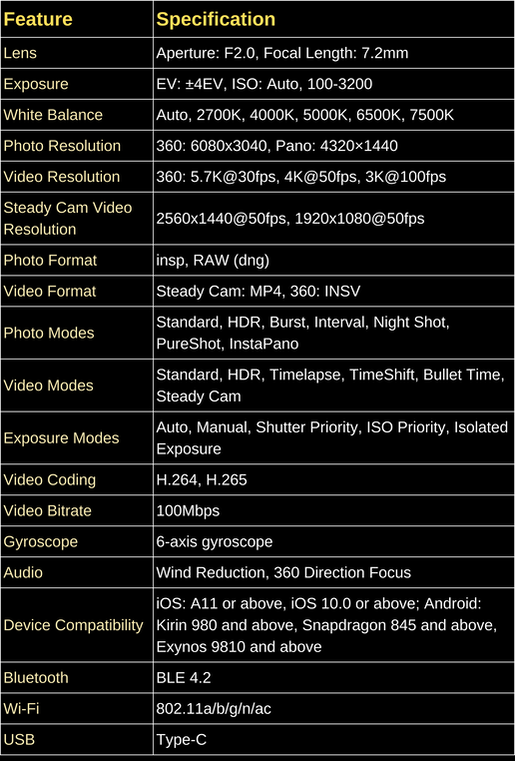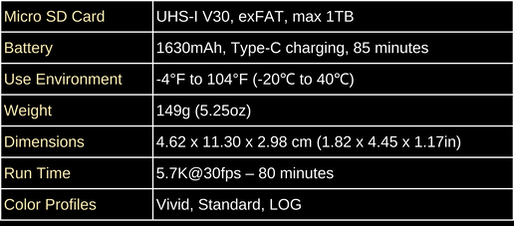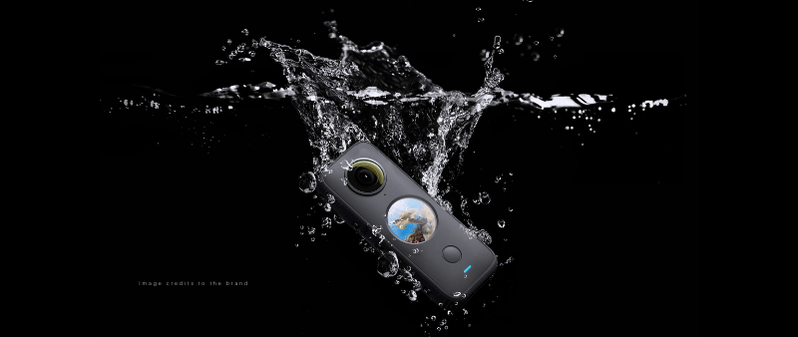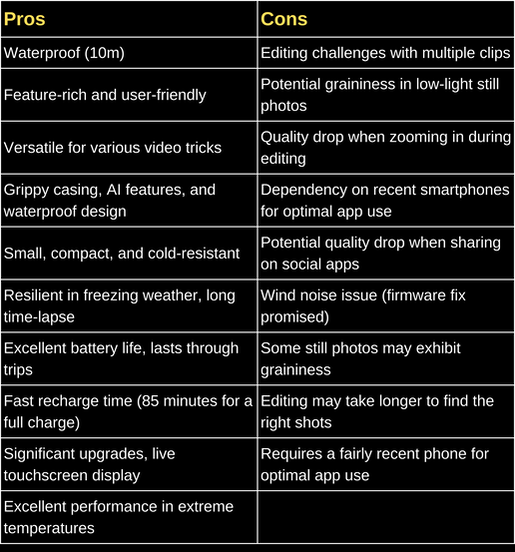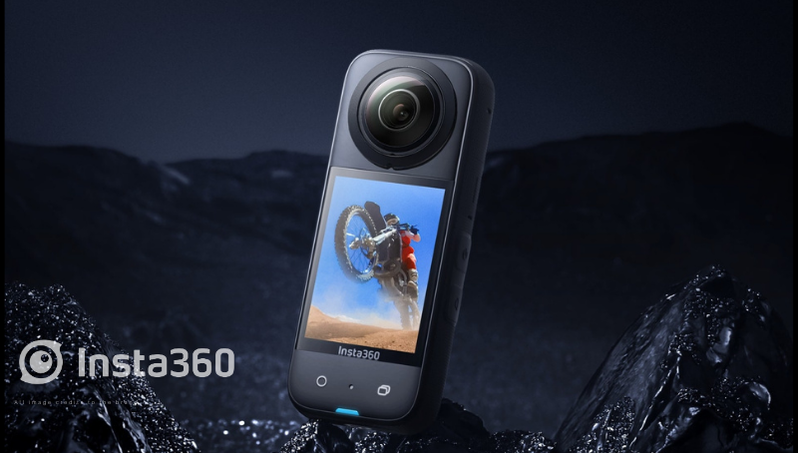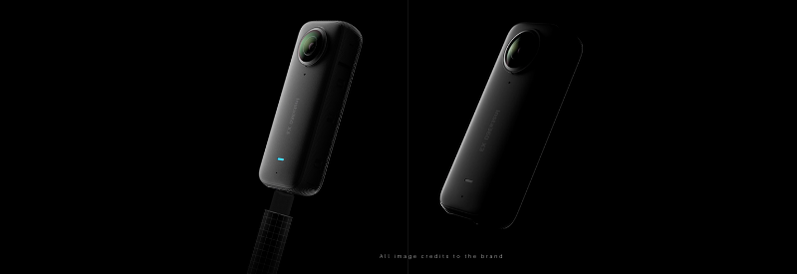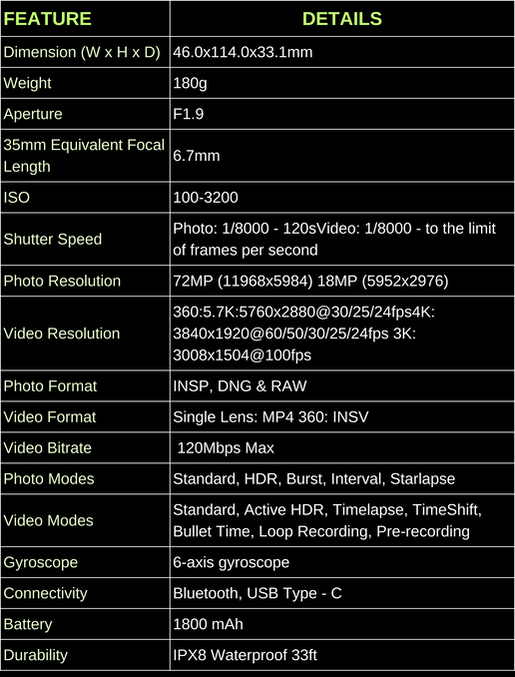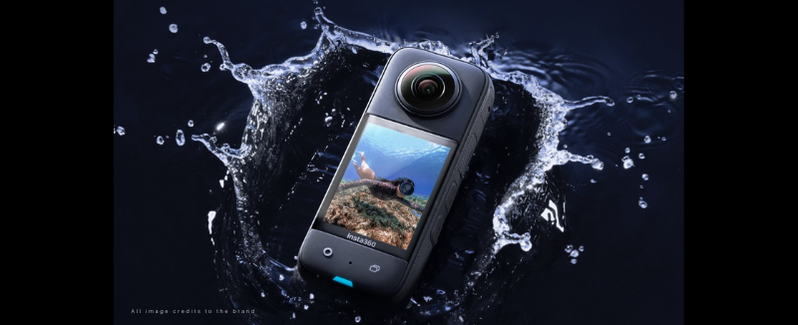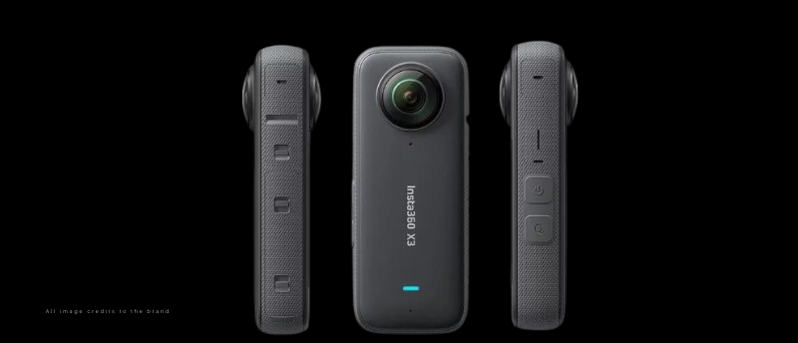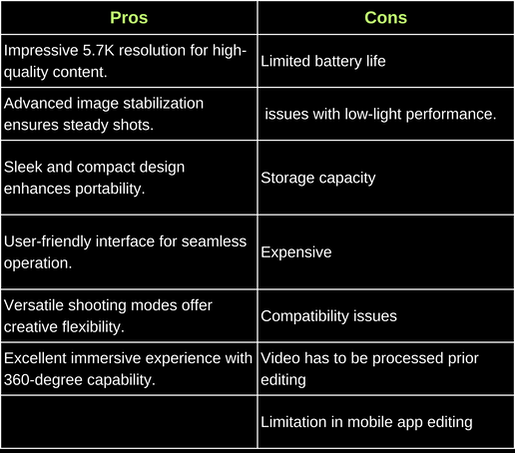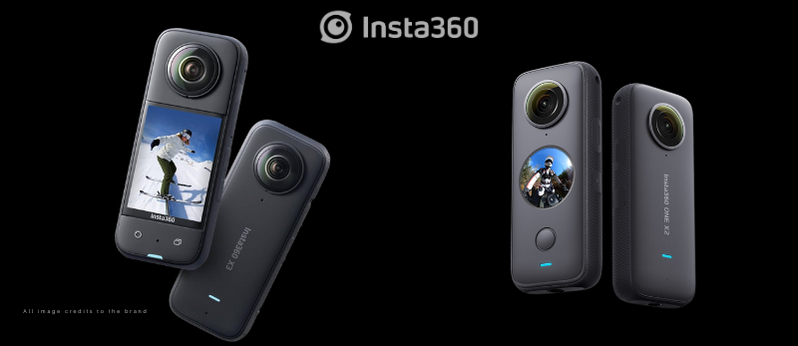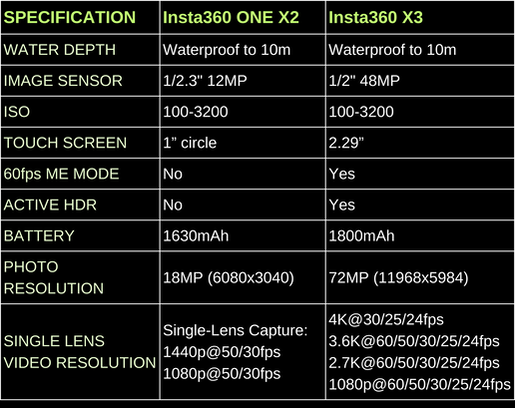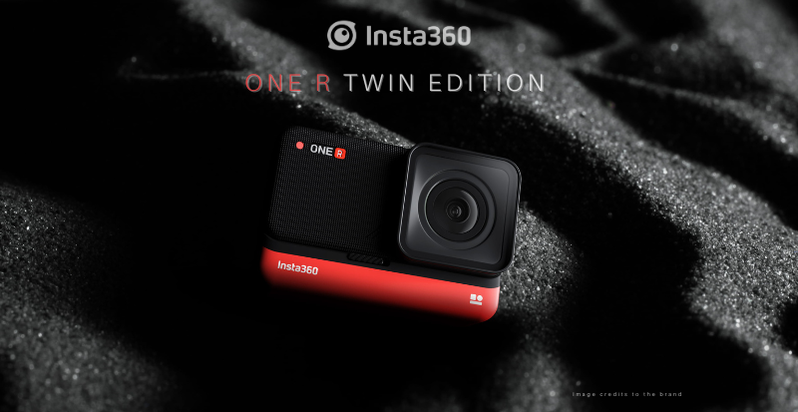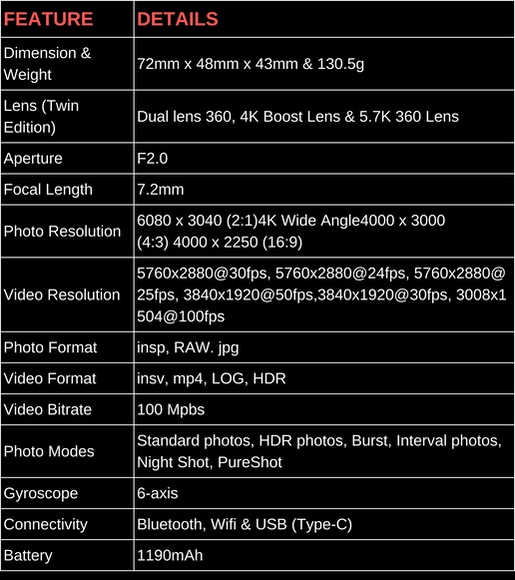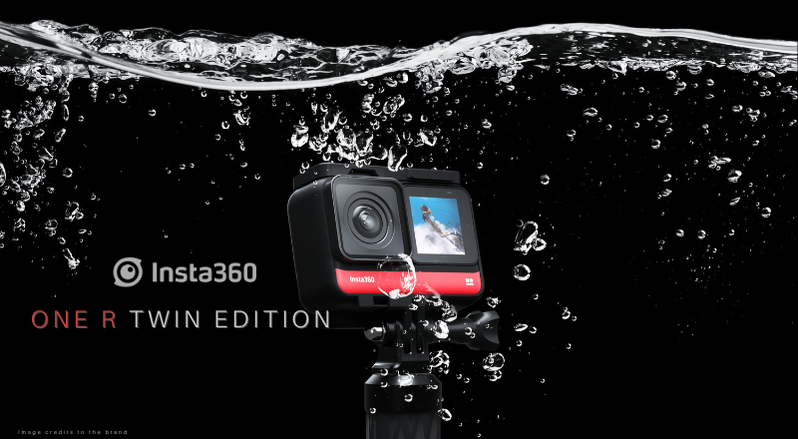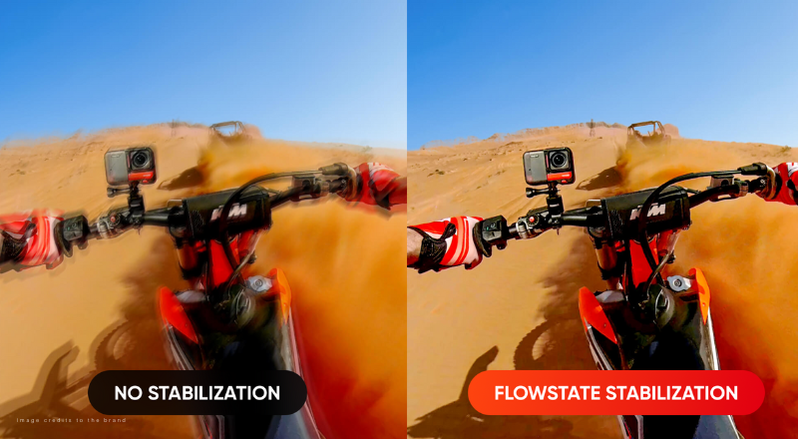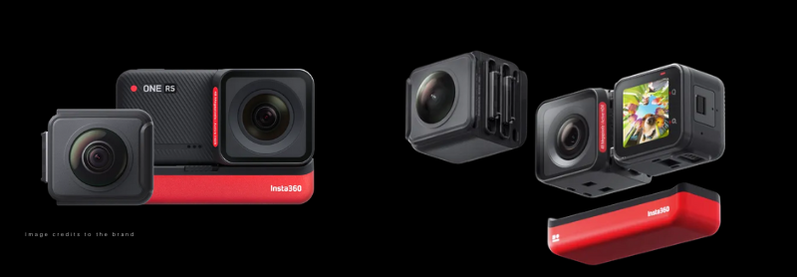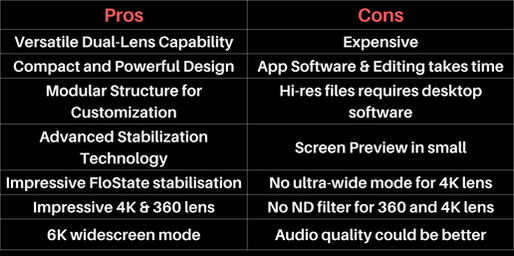|
Introducing the Eufy Smart Scale P2 Pro, a cutting-edge digital bathroom scale designed to help you track and analyze your body composition with unparalleled precision. Equipped with Wi-Fi and Bluetooth connectivity, this smart scale provides a comprehensive view of your health by measuring 16 different body metrics, including weight, heart rate, body fat, BMI, muscle and bone mass, and more. With its advanced technology and high accuracy, the Smart Scale P2 Pro offers a 3D virtual body mode, allowing you to visualize your progress throughout your fitness journey. The scale also features third-party app syncing, unlimited user profiles, and nutrition-tracking capabilities, making it an essential tool for anyone looking to achieve their health and fitness goals. This articles reviews the features, pros and cons of P2 Pro with user reviews from various sources. KEY FEATURES AT A GLANCE
TECHNICAL SPECIFICATIONS PERFORMANCE ON IT’S FEATURES DESIGN & DURABILITY The Eufy Smart Scale P2 Pro has garnered praise for its durability and design, with users commending its sturdy build and sleek appearance. The tempered glass top is particularly appreciated for its durability and resistance to wear and tear. Users have noted that the scale remains reliable even after prolonged use, with one user stating that it "still looked and worked as good as new" after a year of use. The design of the P2 Pro has also been a hit with users, with many praising its minimalist aesthetic. The large, easy-to-read display is a standout feature, with one user describing it as "bright and easy to see even in low light." The scale's slim profile and compact size make it easy to store when not in use. Techadvisor.com review of the P2 Pro highlights its characteristic smart scale design, featuring a square, reflective platform with rounded corners and non-slip feet for safety. The scale is IPX5 Waterproof, making it suitable for use in the bathroom. According to Eufy, the scale's surface is coated with ITO for a larger, reliable measurement area, and its sensors can detect changes as low as 0.1 lb/50g. “At this price point, we’re slightly disappointed that it doesn’t have a USB charging option. It’s powered by four AAA batteries, which are supplied.” Techadvisor.com Techadvisor.com found the P2 Pro to be consistent and accurate in their testing, although they note that this testing method is not perfect. The white LED display shows weight, body fat percentage, and heart rate, with all other measurements accessible through the app. However, the lack of a USB charging option is a slight disappointment at this price point, as the scale relies on four AAA batteries, which are supplied. FEATURES & PERFORMANCE The Eufy Smart Scale P2 Pro has garnered positive reviews for its comprehensive features and performance. According to t3.com, the scale is equipped to measure 16 body metrics, including weight, heart rate, body fat percentage, BMI, muscle mass, bone mass, hydration, cellular protein, BMR, visceral fat, body fat mass, lean body mass, body age, body type, skeletal muscle mass, and subcutaneous fat. The measurements are obtained using BIA technology, which sends harmless electric currents through the user's body to calculate body composition. The results are then sent to the mobile app, allowing users to track their progress over time. Techradar.com praises the scale's ability to present detailed information on 16 metrics, including heart rate, weight, body fat percentage, BMI, hydration, muscle mass, bone mass, basal metabolic rate, lean body mass, body age, body type, subcutaneous fat, body fat mass, and cellular protein. The review notes that the scale uses bioelectrical impedance analysis (BIA) to obtain these measurements, sending harmless electrical currents through the user's feet to take detailed readings of body composition. The app provides information on what each figure means and offers tips to improve or maintain normal levels. Users can set goals for overall weight and body composition and measure their progress against these goals. The scale also offers additional modes for pets and babies, allowing users to track their weight and plot it on a historical graph. The app allows users to export reports, sync data to Fitbit, Apple Health, and Google Fit, and receive push notifications to encourage regular weigh-ins. “The Eufy P2 Pro is a sophisticated smart scale with lots of metrics available, such as body composition and muscle mass, all available at a pretty reasonable price. The presentation of data on the app is great, with the digital model illustrating how your body looks. A few small issues here and there prevent it from being the best out there.” Techradar.com Techadvisor.com highlights the scale's ability to measure 16 different metrics, including heart rate, weight, BMI, body fat, muscle mass, bone mass, water, protein, BMR, visceral fat, body fat mass, lean body mass, body age, body type, skeletal muscle mass, and subcutaneous mass. The review notes that while the accuracy of these measurements may be questionable for professional athletes, they are useful for tracking general fitness trends. The scale also comes with a tape measure that can be used to create a 3D model of the user's body in the app. “With Wi-Fi and Bluetooth connectivity, 16 measurements, sleek design and a feature-packed app, this smart scale punches above its mid-range price point.” techadvisor.com Overall, the Eufy Smart Scale P2 Pro is praised for its comprehensive features, detailed measurements, and user-friendly app. While the accuracy of some measurements may be questionable for professional athletes, the scale is considered a useful tool for tracking general fitness trends and improving overall health. WHAT ARE THE PROS & CONS? The ideal buyers and users of the Eufy Smart Scale P2 Pro include;
Experience the future of home cleaning with the Eufy Clean X9 Pro, a state-of-the-art robotic vacuum and mop with an auto-clean station. This innovative device features adaptive pressure mopping with dual rotating mops, an auto-clean station that washes and dries the mop to prevent bacterial growth, and a powerful vacuum system that effortlessly picks up dust, dirt, pet hair, and crumbs. With its advanced AI.See™ detection, the X9 Pro avoids common household objects, ensuring a thorough and safe cleaning experience. In this review we delve into Eufy’s X9 Pro’s key features, it’s specifications to performance assessed based on multiple user reviews and it’s merits and demerits for potential buyers. KEY FEATURES AT A GLANCE
PERFORMANCE ON IT'S FEATURES AUTO-CLEAN The Eufy Clean X9 Pro offers impressive mopping capabilities, effectively tackling spills and stains with its dual rotating mops that apply significant downward pressure. The auto-mop washing feature, which can be adjusted to clean the mops every 10 minutes, ensures that the mopping pads remain clean and odor-free. This results in a thorough cleaning process, as demonstrated by its ability to handle even significant spills like half a bottle of maple syrup, leaving the floor spotless and residue-free. However, the vacuum's performance on carpets is less impressive due to its inability to handle carpets with a pile depth greater than 0.47 inches. This limitation might necessitate manual adjustments or separate cleaning sessions for carpeted areas. Despite these limitations, the Eufy Clean X9 Pro's auto-clean feature, which dries the mop pads at 104 degrees Fahrenheit to prevent bacterial growth, is a notable advantage, ensuring that the device is always ready for the next cleaning task. “Overall, the Eufy Clean X9 Pro did a decent job of picking up smaller debris in its path, and did so quietly at around 60-65db, depending on the flooring it was on. The sound wasn’t too distracting, with a consistent noise that matched a sound level similar to my window air conditioner. “ techradar.com The Eufy Clean X9 Pro demonstrates good navigation capabilities, effectively maneuvering around walls and furniture in a two-bedroom, two-bathroom apartment on the reviews as stated by techradar.com Its AI sensors, although occasionally misjudging obstacles like a record stand, generally manage to navigate around objects without causing damage. However, the sensor's effectiveness varies, as it sometimes prevents the vacuum from fitting under certain shelving. “..navigating the app is on a par with other robot vacuum apps I’ve used. When you open the app, your home screen will display your connected devices, and simply tapping on the Eufy X9 Pro will bring you to all the settings for the vacuum. “ techradar.com The device's performance on rugs is mixed; while it manages to lift its mopping cloths without fail when transitioning from rugs to hard floors, it struggles with some rugs and exhibits a peculiar 'dance' around rug edges. Despite these quirks, the Eufy Clean X9 Pro operates quietly, producing a consistent sound level comparable to a window air conditioner, which is around 60-65db. DESIGN The Eufy Clean X9 Pro presents a design that balances functionality with aesthetics, albeit with a few notable trade-offs. The vacuum's docking station is substantial, measuring 17 inches high and 16 inches wide, which might pose challenges for those with limited space. The vacuum itself, stands at 4.5 inches high, allowing it to fit under many couches. The base station's design is sleek and attractive, featuring rounded edges and a black color scheme that helps minimize smudges. It houses two water tanks, one for clean water and another for dirty water. The dirty water tank requires regular rinsing to prevent unpleasant odors, a common complaint among users. The base station's size is justified by its role in housing the water reservoirs and a built-in heated drying mechanism that effectively prevents the mop from becoming moldy. The robot vacuum deviates from the traditional circular design, opting for a more squarish look with rounded edges. This design choice might limit its ability to clean under very low furniture due to the presence of various sensors for obstacle avoidance and carpet detection. The vacuum features a dust box with a 13.9oz/410ml capacity, which may need frequent emptying depending on usage. The lack of an auto-emptying feature on the base station is a missed opportunity for convenience. The mopping system of the Eufy Clean X9 Pro is a standout feature, with two heavy-duty rotating mopping cloths that are thicker and more effective than those found on other machines. These cloths auto-lift when the vacuum encounters carpets, ensuring that floors are cleaned without unnecessary dampness. In summary, the Eufy Clean X9 Pro offers a design that prioritizes cleaning efficacy and user convenience, albeit at the expense of a larger footprint and manual maintenance requirements. BATTERY LIFE The Eufy Clean X9 Pro demonstrates a commendable battery life, particularly when considering its dual functionality as both a vacuum and a mop. The battery lasts approximately 150 minutes on a standard setting, which includes vacuuming and medium-level mopping. This duration allows the robot to cover a significant area before requiring a recharge. Recharging the X9 Pro takes about four hours, which is typical for devices of this nature. An interesting feature of the X9 Pro is its ability to resume cleaning at 75% battery life. This ensures that any unfinished cleaning tasks are completed without manual intervention, enhancing the device's autonomy and efficiency. In practical testing, the X9 Pro showed a consistent performance. It managed to clean a space in just over two hours with 20% battery life remaining. When sent out again on the same cleaning route, it continued for another 20 minutes before reaching a low battery level and returning to the base station. The battery life of the X9 Pro is influenced by the cleaning settings. Higher suction power or more intensive mopping may drain the battery faster. However, the ability to automatically resume cleaning at 75% battery life ensures that the device can complete its tasks effectively, even if the initial charge does not suffice. In summary, the Eufy Clean X9 Pro offers a robust battery life that supports its dual cleaning capabilities. Its recharge time is reasonable, and the automatic resumption of cleaning at a certain battery level adds to its convenience and efficiency. OVERALL PERFORMANCE The Eufy Clean X9 Pro is a high-end robot vacuum and mop that combines powerful cleaning capabilities with advanced technology, making it a worthwhile investment for those willing to spend a bit more for convenience and efficiency. The X9 Pro is widely available in the US, UK, and Australia, which is a significant advantage for international buyers. The price point is on the higher side, but it's justified by the array of features it offers, including adaptive pressure mopping with dual rotating mops, an auto-clean station with heated drying, and a powerful vacuum system. In terms of design, the X9 Pro is easy to set up and features a sleek, modern look. The vacuum itself is compact enough to fit under most furniture, and the mop cloths are impressive, lifting automatically when carpet is detected. The base station is quite large, but it houses the auto-clean station and water tanks, which are essential for the mop's cleaning function. Performance-wise, the X9 Pro excels in mopping, effectively tackling spills and stains with its dual rotating mops that apply significant downward pressure. The auto-mop washing feature, which can be adjusted to clean the mops every 10 minutes, ensures that the mopping pads remain clean and odor-free. However, the vacuum's performance on carpets is less impressive due to its inability to handle carpets with a pile depth greater than 0.47 inches. The app is user-friendly and allows for easy adjustment of vacuum settings. It also creates an intelligent map of the cleaning space, which is helpful for scheduling cleaning sessions and monitoring the vacuum's progress. Battery life is on par with other robot vacuums, lasting about 2.5 hours on a single charge. Recharging takes about 4 hours, which is standard for this type of device. Overall, the Eufy Clean X9 Pro is a top-of-the-line robot vacuum and mop that offers a powerful and efficient cleaning experience. While it may be on the expensive side, its advanced features and impressive performance make it a worthwhile investment for those looking for a high-quality cleaning solution. WHAT ARE THE PROS & CONS OF X9 PRO? The X9 Pro shines in its mopping performance, effectively tackling spills and stains with its dual rotating mops that apply significant downward pressure. The auto-clean station is a standout feature, washing the mopping cloths during and after each clean, refilling the vacuum's water tank, and drying the mops to prevent smells. Setup and operation are a breeze, thanks to a user-friendly app that offers in-depth control over cleaning modes, scheduling, and locations. The X9 Pro boasts the largest clean and dirty water tanks of all Eufy models, which is beneficial for longer cleaning sessions. With a powerful suction of 5,500Pa, it excels at removing pet hair and debris from various surfaces. However, the X9 Pro's vacuuming performance falls short compared to its mopping capabilities, particularly on carpets with a pile depth greater than 0.47 inches. Additionally, it lacks a self-emptying bin system, requiring manual emptying of the dust bin. The high price point may deter some potential buyers. Overall, the X9 Pro is an excellent choice for those who prioritize mopping performance and are willing to invest in a premium product. IDEAL BUYERS FOR EUFY X9 PRO
Introducing the Powerology Smart Video Doorbell, a cutting-edge solution by Powerology aimed at fortifying your home's security while adding a touch of convenience to your daily life. Boasting an array of embedded features and top-notch performance, this smart doorbell stands as a reliable guardian for your household. Designed to seamlessly integrate into your smart home ecosystem, the POWEROLOGY Smart Video Doorbell offers a suite of functionalities tailored to elevate safety and ease of use. In this review, we'll explore both the merits and demerits of this innovative device, with the insights from user feedback and evaluations. From its impressive security features to potential concerns regarding battery life and subscription fees, we'll provide an impartial assessment to assist you in making an informed decision about integrating the POWEROLOGY Smart Video Doorbell into your home security setup. KEY FEATURES AT A GLANCE
TECHNICAL SPECIFICATIONS PERFORMANCE ON IT'S FEATURES Enhanced Security and Night Vision: The Powerology Smart Video Doorbell prioritizes your home's security with its advanced night vision capability, ensuring clear visibility even in low-light conditions. This feature provides round-the-clock monitoring, offering peace of mind to users concerned about their family's safety. Advanced Motion Detection Technology: Users appreciate the doorbell's advanced motion detection technology, which promptly sends alerts to their smartphones upon detecting any movement in its field of view. This real-time notification feature enables swift responses to potential security risks, enhancing overall home protection. Easy Installation and Connectivity: Installation of the Powerology Smart Video Doorbell is a breeze, with users noting its straightforward setup process that requires no professional assistance. Seamless connectivity to home Wi-Fi networks facilitates remote access to live video feeds and other functionalities via smartphones or tablets, adding convenience to home surveillance. Two-Way Audio Communication: The inclusion of two-way audio communication enables seamless interaction with visitors at the door, even when users are away from home. This feature proves invaluable for managing deliveries and communicating with guests, enhancing user convenience and security. Water Resistance and Durability: With an IPX4 rating, the Powerology Smart Video Doorbell is built to withstand various weather conditions, ensuring reliable performance regardless of rain or snow. Users commend this water-resistant feature for its contribution to the device's durability and longevity. Micro SD Slot and Storage Options: Users have the flexibility to opt for local storage of recorded video footage with the Powerology Smart Video Doorbell's support for Micro SD cards up to 32GB. This feature provides a cost-effective alternative to cloud storage services, catering to users' diverse preferences and budget constraints. Battery Life and Performance: Powered by rechargeable battery cells, the Powerology Smart Video Doorbell delivers long-lasting performance, with users reporting up to 6 months of continuous usage on a single charge. The dependable battery life ensures uninterrupted home security monitoring, contributing to user satisfaction and confidence in the device. WHAT ARE THE PROS & CONS OF POWEROLOGY VIDEO DOORBELL?
Introducing the Powerology Wi-Fi Baby Camera, designed to provide parents with real-time monitoring of their children. This camera offers features such as high-definition video streaming, motion and cry detection sensors, two-way talk capabilities, and night vision, ensuring comprehensive surveillance and interaction with your child, day or night. With its sleek design and user-friendly mobile app, the Powerology Wi-Fi Baby Camera aims to provide parents with peace of mind by allowing them to keep a close watch on their little ones from anywhere, at any time. According to the brand's promotional materials, provided below is an overview of the features, advantages, and potential drawbacks of the Baby Camera. KEY FEATURES AT A GLANCE
TECHNICAL SPECIFICATIONS PERFORMANCE ON IT’S FEATURES REAL-TIME HD & MONITORING The Powerology Wi-Fi Baby Camera offers exceptional performance in monitoring and real-time HD features, providing parents with comprehensive surveillance capabilities. With a high-definition resolution of 1920 x 1080 at 15fps, the camera delivers clear and detailed video streaming, ensuring that every moment in your baby's room is captured with precision. Its real-time monitoring feature enables parents to stay connected to their child's nursery from anywhere using the intuitive mobile app, allowing for immediate access to live video feeds and timely alerts for motion detection or cries. Additionally, the wide-angle view of 100° ensures extensive coverage of the nursery, granting parents a complete perspective of their child's environment. With reliable and efficient monitoring, the Powerology Wi-Fi Baby Camera ensures parents can keep a watchful eye on their little one, promoting safety and providing peace of mind around the clock. CAMERA The camera feature of the Powerology Wi-Fi Baby Camera delivers outstanding performance, providing parents with a reliable and comprehensive monitoring solution. With high-definition resolution of 1920 x 1080 at 15fps, this camera ensures crystal-clear video streaming, allowing parents to observe their child with clarity and detail. Equipped with a wide-angle lens offering a 100° coverage, the camera captures a broad area of the nursery, ensuring that no detail goes unnoticed. Its advanced night vision capabilities enable clear visibility in low-light conditions, extending up to 5 meters, ensuring parents can monitor their child around the clock without interruption. The motion detection sensor alerts parents to any nearby movements, while the cry detection sensor notifies them of their baby's cries, providing added peace of mind. Overall, the camera feature of the Powerology Wi-Fi Baby Camera excels in performance, offering parents reliable monitoring and surveillance of their child in real-time. DESIGN The design of the Powerology Wi-Fi Baby Camera embodies both functionality and aesthetics, catering to the needs of modern parents. With its sleek and modern appearance, this camera seamlessly integrates into any nursery decor, complementing the surroundings with its elegant white finish. Its compact and unobtrusive build ensures it doesn't distract from the nursery's ambiance while still providing comprehensive monitoring capabilities. The camera's subtle presence allows it to blend into the background, maintaining focus on the most important aspect: the safety and well-being of your child. Additionally, the thoughtfully designed user interface of the accompanying mobile app enhances the overall user experience, allowing for easy control and monitoring from any location. Overall, the design of the Powerology Wi-Fi Baby Camera prioritizes both style and functionality, offering parents peace of mind while adding a touch of sophistication to their nursery. WHAT ARE THE PROS & CONS?
Introducing Powerology's Universal Charger 45W PD: the perfect travel buddy for tech enthusiasts. With four international plugs and dual fuse 8A, it's ready for over 150 countries. Charge your devices rapidly and safely with PD45W technology, reaching 0% to 60% in just 35 minutes. Active protect charge management ensures your devices stay safe. Its adaptability shines with interchangeable sliders for EU, UK, and US plugs. Plus, enjoy charging multiple devices simultaneously with three USB-A and one USB Type C port. One of the standout features of our Universal Charger is its adaptability. Say goodbye to cumbersome adapters; with one universal socket and interchangeable sliders for EU, UK, and US plugs, you have everything you need in one compact device. Whether it's your camera, iPad, MacBook, or smartphone, this charger has you covered. Furthermore, the multi USB ports offer unparalleled convenience. With three USB-A and one USB Type C port, you can charge multiple devices simultaneously, from smartphones to laptops. Experience the convenience of fast charging, with the ability to juice up your smartphone or laptop from 0% to 65% in just 35 minutes. Powerology's Universal Charger 45W PD is not just a travel essential; it's a reliable, efficient, and versatile power solution for modern explorers. Fast, secure, and reliable—experience the difference with Powerology. KEY FEATURES AT A GLANCE
TECHNICAL SPECIFICATIONS PERFORMANCE ON IT’S FEATURES The performance of POWEROLOGY's Universal Charger 45W PD + Triple USB-A 2.4A Ports has received rave reviews from users worldwide. Users consistently praise its lightning-fast charging capabilities, with many reporting significant reductions in charging times compared to their previous chargers. The PD45W Power Delivery Technology ensures efficient charging across various devices, from smartphones to laptops, while the inclusion of three USB-A ports allows for simultaneous charging of multiple devices without sacrificing speed. CHARGING POWER POWEROLOGY's Universal Charger 45W PD + Triple USB-A 2.4A Ports has garnered widespread acclaim for its exceptional charging power, as attested by numerous user reviews. Users consistently commend its ability to deliver swift and efficient charging across a spectrum of devices. With the PD45W Power Delivery Technology at its core, this charger ensures rapid charging times, allowing users to quickly replenish their device's battery levels. Whether it's smartphones, tablets, or laptops, users appreciate the charger's ability to provide a reliable and consistent power supply. The inclusion of three USB-A ports further enhances its functionality, enabling simultaneous charging of multiple devices without compromising on speed. In essence, the Universal Charger 45W PD has established itself as a go-to choice for individuals seeking reliable and high-performance charging capabilities, earning praise for its versatility, efficiency, and overall charging prowess. DESIGN AND VERSATILITY POWEROLOGY's Universal Charger 45W PD + Triple USB-A 2.4A Ports has received widespread acclaim for its exceptional versatility and innovative design, as echoed in numerous user reviews. Users consistently praise its ability to cater to a diverse range of charging needs, thanks to its multifunctional features. With three USB-A ports and a USB-C port, this charger offers unparalleled flexibility, allowing users to charge multiple devices simultaneously, from smartphones to tablets and laptops. The inclusion of international plug options further enhances its versatility, making it a convenient travel companion for users worldwide. Beyond its functionality, users also commend the charger's sleek and compact design, which makes it easy to carry and use on the go. Its durable construction and user-friendly interface have also been lauded by reviewers, highlighting its thoughtful design that prioritizes both style and functionality. In summary, the Universal Charger 45W PD stands out for its impressive versatility and user-centric design, earning it praise as a reliable and indispensable charging solution for modern users. OVERALL PERFORMANCE Users also appreciate the charger's compact design and international plug options, making it an ideal companion for travelers. Overall, the Universal Charger 45W PD has earned a reputation for its outstanding performance, reliability, and convenience, making it a top choice for those seeking a versatile and efficient charging solution. WHAT ARE THE PROS & CONS OF POWEROLOGY UNIVERSAL CHARGER 45W PD? WHO SHALL BUY A UNIVERSAL CHARGER & BENEFIT MOST?
Introducing the Powerology 500W Universal Multi-Port Car Inverter: Making its debut in 2023, this cutting-edge device has swiftly become a go-to solution for staying charged while on the move. Despite its recent entry into the market, it has already garnered widespread acclaim from customers who have lauded its exceptional performance. With a sleek and compact design coupled with robust functionality, this inverter seamlessly converts your vehicle's DC power into AC power, delivering a consistent output of up to 500 watts. What sets this inverter apart is its versatile array of ports, including AC outlets, USB ports, and a cigarette lighter socket. This diverse range of connections enables simultaneous charging of multiple devices, catering to a wide range of needs, from powering laptops and smartphones to running portable appliances and charging power tools. Crafted with convenience and adaptability in mind, the Powerology 500W Inverter ensures reliable power wherever your journey takes you. Whether you're embarking on a road trip, venturing into the great outdoors for a camping adventure, or simply commuting to work, this inverter empowers you to stay connected and powered up like never before. Its user-friendly design and high-performance capabilities make it an indispensable companion for anyone seeking reliable on-the-go power solutions. According to the brand's promotional materials, provided below is an overview of the features, advantages, and potential drawbacks of the Multiport Power Inverter, along with user feedback received thus far. KEY FEATURES AT A GLANCE
TECHNICAL SPECIFICATIONS PERFORMANCE ON IT’S FEATURES OVERALL PERFORMANCE This device efficiently transforms 12V car power into 220 volts, offering two Universal ports adaptable to various plug types. With outputs for both USB Type-A and USB Type-C, it provides versatility for charging a wide array of devices. Notably, the inclusion of an LED display enhances user convenience, allowing for easy monitoring of power usage. Moreover, the built-in safety features, such as fire prevention mechanisms and electrical protection, instill confidence in the device's reliability and user safety. These safeguards mitigate potential risks associated with electrical hazards, ensuring a secure charging experience. However, despite its commendable features, some limitations have been observed. The inverter's capacity to sustain larger loads over extended periods remains a concern, as it tends to struggle and occasionally shutdown under heavy usage. Additionally, while the device is generally compatible with various gadgets, occasional compatibility issues have been reported, suggesting room for improvement in this area. Overall, the Powerology Multiport Converter has received accolades for its performance, achieving a notable five-star rating from buyers on platforms like Amazon and Runbazaar. This widespread acclaim attests to its effectiveness as a reliable companion for individuals on the move. In summary, while the Powerology Multiport 500W Power Converter boasts several commendable features and has garnered positive feedback from users, careful consideration of its limitations is advised to ensure it aligns with specific usage requirements and expectations. “Everything is cool.. keep it up.” Customer Review on runbazaar.com WHAT ARE THE PROS & CONS? This table provides a succinct overview of the strengths and weaknesses of Powerology's 500W Multiport Power Car Inverter, aiding potential buyers in their decision-making process. WHAT ARE THE BENEFITS OF USING A UNIVERSAL MULTI-PORT CAR-INVERTER?
The Google Pixel 7 Pro marks a significant leap forward in mobile technology, featuring the state-of-the-art Google Tensor G2 for enhanced performance and security at the time of their release on 2022– all at a more affordable price compared to Samsung and Apple. With a primary focus on elevating mobile photography and videography, this device boasts a top-tier camera system, complete with a 5x telephoto lens and an impressive 30x Super Res Zoom. Prioritizing extended usage, the Pixel 7 Pro introduces features like the Adaptive Battery, providing over 24 hours of power, and the Extreme Battery Saver mode, extending this duration up to an impressive 72 hours. Beyond its exceptional performance and camera capabilities, the Pixel 7 Pro delights users with a 6.7-inch Smooth Display that intelligently adjusts up to 120Hz, ensuring an immersive visual experience. Security is paramount, with the Google Tensor G2 and the Titan M2 chip working in tandem to provide multiple layers of protection for user data. The upcoming integration of a VPN by Google One underscores the commitment to online privacy. Paired with user-friendly functionalities like Google Assistant, easy device pairing, and Find My Device, the Pixel 7 Pro finds the perfect balance between innovation and practicality. Boasting robust durability, IP68 water and dust resistance, and scratch-resistant Corning Gorilla Glass Victus, the Pixel 7 Pro seamlessly integrates cutting-edge technology with user-centric design. This article aims to offer an unbiased evaluation of the Google Pixel 7 Pro, delving into its technical specifications and performance based on reviews from various sources. KEY FEATURES AT A GLANCE
TECHNICAL SPECIFICATIONS HOW IS THE PERFORMANCE OF PIXEL 7PRO ON IT’S FEATURES? With a spacious 6.70-inch display, IP68 water resistance, and the durability of Corning Gorilla Glass Victus, the device presented a compelling package. The absence of a headphone port was compensated with a USB-C port supporting 30W charging. CAMERA EXCELLENCE The Pixel 7 Pro's triple rear camera system, featuring a 5x telephoto lens and an upgraded ultra-wide lens with autofocus powering Macro Focus, was a standout feature. “The camera is absolutely amazing and the device animations is very crisp and fast with faster refresh rate of the display. Overall, it was a great deal for the price.” Amazon Customer Review “I bought the Pixel also for the Camera, which I believe is currently the best available.” Amazon Customer Review “Not much to say about the cameras except that they are awesome. Everyone already knows Pixels have some of the best cameras.” Amazon Customer Review Techradar.com praised its ability to enhance photos from older phones, stating that the Pixel 7 Pro does things that none of its competitors even attempt. “The Google Pixel 7 Pro takes amazing photos with ease, night and day, but it also takes the photo experience further than ever before – it actually made our photos from older phones look better. For now, that’s something you can only do with a Tensor G2-enabled phone like the Pixel 7, Pixel 7a or Pixel 7 Pro; in fact, there are quite a few things the Pixel 7 Pro can do that none of its competitors even attempt.” techradar.com review at the time of Pixel 7 Pro release. Theverge.com, while lauding the overall camera capabilities, expressed reservations about the Macro Focus mode, noting its excellence but pointing out differences compared to dedicated macro lenses. “The Macro Focus mode in particular was disappointing. Don’t be mistaken – the Pixel 7 Pro takes excellent photos, even when it gets very close to a subject. The images reveal plenty of fine detail without obvious artifacts of digital trickery. Still, the images are not as impressive as what you’d get from a ‘proper’ macro lens. You shouldn’t expect invisible details to be revealed. You shouldn’t even expect better images than you’d get from the iPhone 14 Pro.” theverge.com Review on Google Pixel7 Pro Macro Photography “The only letdown is the cinematic video. It's not a feature that we use much, but there's visible distortion around some objects in the videos when tested. It was true six months ago, and it remains true today.” digital spy.com overall review on Pixel 7 Pro on 2024 More familiar features like Magic Eraser really didn’t impress me at first, but lately, I’ve seen more and more instances where it does a very convincing job of removing people from the backgrounds of photos. I used the 2x crop zoom and the 5x telephoto camera in a dark theater just last night and got surprisingly good photos of performers onstage across the room.” theverge.com review Image Shot on Google Pixel 7 Pro - rear camera by Digitalspy.com PERFORMANCE & SECURITY A custom-built processor, Google Tensor G2, and the Titan M2 security chip promised a faster and more secure experience. Amazon customer reviews generally applauded the device's performance, with some noting improvements over its predecessor, the Pixel 6 Pro. “Again, using my S22 Ultra as a comparison, I can't say I've noticed a performance hit, even though the single core specs on the Snapdragon processor are better. Overall, I think it would be fair to say that the Pixel 7 Pro does all of the things the Pixel 6 Pro does, but faster and sometimes (like with Magic Eraser) better.” Amazon Customer Review “The Pixel 8 Pro has now been released, but you can now buy the Pixel 7 Pro for under £700, making it a great value option. It's still a fantastic Android phone in 2024 - with a brilliant camera system and an expansive display that's great for watching movies and shows” digitalspy.com overall review on Pixel 7 Pro on 2024 “Unlike the 6 Pro, we love that face unlocking returns for the 7 Pro (it's also on the 7 and the 7a) and we've never noticed it failing for launching the screen. The same goes for the under-screen fingerprint sensor – it hugely improved between generations and works without issue.” digitalspy.com Review on Software However, occasional overheating during camera and GPS usage was reported by users, echoing the sentiments of an Amazon customer who mentioned the phone getting "very hot.” “Phone is getting very hot (even with thick case) when using camera, google maps and other apps that rely on GPS continuously. Occasional unbearable overheating. Sometimes the phone display also seems to get hot.” Amazon Customer Review “Moving from an old iPhone to Android for various reasons. After lots of research and comparisons between Galaxy S22 Ultra, Galaxy S23 Ultra, Pixel 7 and Pixel 7 Pro, I bought Pixel 7 Pro a week ago. Not a heavy phone user. Bought this knowing it's history of heating problems at the deal price of $700. It is just ok for me.” Amazon Customer Review DISPLAY & BUILD QUALITY The Pixel 7 Pro's LTPO OLED display, at 6.7 inches with a resolution of 3120 x 1440, offered impressive clarity. However, users expressed concerns about the screen's sensitivity and susceptibility to damage due to its protruding edges. “the finger print sensor doesn't detect fingerprint 40% of the time.The call screening feature and the live voice transcription feature are very useful.” Amazon Customer Review “No matter how much adjusting of the screen & display setting, the screen randomly-to-always responds to finger and/or other pressure sensing to cause the screen to light up. Even in my shirt pocket it will randomly “activate”" Amazon Customer Review “The 7 Pro's screen is an expansive 6.7 inches, so roughly the same size as the iPhone 14 Plus and Samsung's S23 Ultra. It's crisp and smooth to use – fantastic for scrolling social media, watching YouTube and playing games – though we struggle to wield it with one hand.The brightness on the responsive OLED screen has increased by more than 20% from the 6 Pro, and during months of use, we've never had issues with using the smartphone in sunny or glare-heavy weather.” digitalspy.com review “The phone screen pokes out above the edges of the phone body, which makes the screen and screen protector more vulnerable to breakage. (Normally, I replace my screen protector about once a year, but I've already replaced 2 on this phone in the few months since I got it!) Also, manufacturers are having to design the Pixel 7 phone cases with slightly retracted sides so they won't displace a screen protector's curved edges, because that causes buckling and poor touchscreen sensitivity. Again, less protecton means more hazard and less protection for the screen.” Amazon Customer Review “The one thing I don't like, is the sensitivity of the screen. Holding it one-handed, I use my thumb to scroll up and down. This will easily cause the screen to think you're long-pressing, and highlight the text to allow you to copy/paste/google search, etc.”Amazon Customer Review "The display has rounded edges that work to keep the bezels much smaller than the 7a, but we warn you: this is one slippy phone. You'll need a case or it will try to escape your grasp at every opportunity” digitalspy.com review The device's slippery nature without a case was also noted in various reviews, with techradar.com mentioning, "the phone isn’t the easiest to hold.” “The phone isn’t the easiest to hold. It’s large, with a 6.7-inch display, and that glossy black glass makes it a bit slick.” techradar.com “The phone is very slippery without a case. Finding a good screen protector and case are tricky due to the curved display.” Amazon Customer Review “The overall feel is fairly premium, though I think the display has a kind of plastic feel to it. The S22 series feels much more solid and utilitarian, but I'd argue less expensive…” Amazon Customer Review CONNECTIVITY & ADDITIONAL FEATURES User experiences varied regarding the fingerprint sensor, with some mentioning occasional detection issues. “Bluetooth will be a 50/50 if it'll connect to any of my Bluetooth devices when it never had a problem before.” Amazon Customer Review “There have been multiple instances where the phone wouldn't connect to my car via usb. I would need to restart the phone to get it to work. Video recording will stop and not let you record if the temperature outside is too high.” Amazon Customer Review The introduction of Clear Calling received positive feedback for its noise cancellation capabilities during calls. However, many reviews we came across find phone calls and answering problematic as stated in the below reviews. “the Pixel 7 Pro introduced a new version of the feature where it sometimes shows the phone tree menu options on-screen before they’re spoken. That’s a really clever way to save a few seconds of time, and it works well with a few major toll-free numbers that Google suggested I try with it. But even now, I still can’t get it to work with the places I regularly call, like my pharmacy or PetSmart.” theverge.com review “My favorite Android fault (that has never been totally addressed) is the craziest of all. Answering an incoming phone call.….The answer button can pop up several different places on the screen, or not pop up at all. I thought I was nuts, because sometimes it seemed like a call would come in, with NO WAY to answer it.” Amazon Customer Review “I also tested Clear Calling when it was released in January, and it works really well to act as a kind of noise cancellation when you’re talking to someone who’s in a loud environment.” theverge.com review “And I’m basically hooked on the Recorder app — it records briefings and calls for me and transcribes them with surprising accuracy on-device. When I want to check on a specific quote or a number, all I have to do is search for it, and I’ll find the right point in the recording so I can re-listen. It saves me tons of time,” theverge.com review BATTERY LIFE & CHARGING Opinions on battery life varied, with some deeming it standard and others finding it decent. Charging speed, utilizing a 30W wall charger, was considered acceptable but not exceptional by digitalspy.com. “Battery life is fairly decent, touch sensitivity is fine, screen clarity is excellent, and the camera is great..” Amazon Customer Review “On test, the battery went from dead to 50% full in around 30-40 minutes with a 30W wall charger (yes, like other flagships these days there's no adapter in the box, just the USB-C cable). That's acceptable, but not exceptional.” digitalspy.com review on Battery Some users expressed disappointment in the absence of USB-C to HDMI connectivity, emphasizing Google's push towards promoting its products. “Battery life is not as terrible as some people have said. However, it's not great either. It feels standard to me. I will still need to charge at the end of each day. It's certainly not a 24 hour battery if you use your phone regularly. Charging speed is slow.” Amazon Customer Review AUDIO QUALITY While some users labeled the Pixel 7 Pro's speakers as below average, accentuating vocal frequencies over bass, reviews suggested that audio performance might be subjective and dependent on individual preferences. “Speakers are below average. They accentuate vocal frequencies and subdue bass. This nonlinear behaviour can cause fatigue if you listen to vocals with shriller tones.” Amazon Customer Review OVERALL REVIEW The Google Pixel 7 Pro, with its innovative features, advanced camera system, and robust performance, offers a compelling choice in the competitive smartphone market. User experiences are diverse, emphasizing the importance of personal preferences in choosing a device. As the Pixel 8 Pro enters the scene, the Pixel 7 Pro remains a noteworthy option, especially considering its competitive pricing in 2024. Google Pixel 7 Pro's Macro Photo WHAT ARE THE PROS & CONS? The Pixel 7 Pro offers an impressive camera system, powerful performance, and innovative features. However, user experiences vary, with occasional overheating, display sensitivity concerns, and challenges in finding suitable screen protectors WHY CHOOSE GOOGLE PIXEL 7PRO IN 2024?
WHO'S GOING TO LOVE PIXEL 7PRO?
The Insta360 ONE X2 stands out as a top-tier 360-degree camera, appealing to both beginners and experienced content creators. With a robust waterproof design up to 10 meters, it outperforms competitors like the GoPro Max and Kandao QooCam 8K, catering to diverse water-related activities. Reviews commend the ONE X2 for its optimal blend of features, software, and user-friendliness, though it benefits from recent smartphones for the best app experience. Its exceptional versatility makes it the preferred camera for various scenarios, earning additional praise. Praised for its 360-degree capabilities, waterproof design, and AI features, the ONE X2's compact design and usability in freezing conditions make it well-suited for cold-weather activities. While recognising editing challenges and quality considerations, especially in low-light stills, the ONE X2 shines with upgrades like IPX8 water-resistance and a live touchscreen display, as emphasised in detailed reviews below. This article aims to comprehensively evaluate the Insta360 One X2 camera, providing an in-depth exploration of its technical specifications, performance based on reviews, and delivering an unbiased and thorough assessment of its strengths and weaknesses. Continue reading for more insights. KEY FEATURES AT A GLANCE
Reviews commend the ONE X2 for its optimal blend of features, software, and user-friendliness TECHNICAL SPECIFICATIONS HOW IS INSTA360 ONE X2 CAMERA'S PERFORMANCE ON IT’S FEATURES? The Insta360 ONE X2 emerges as a formidable contender in the 360-degree camera landscape, boasting a variety of features that cater to both novice users and seasoned content creators. This thorough review compiles insights from diverse user experiences WATERPROOF MARVEL The ONE X2's waterproof design, extending to an impressive 10 meters (33ft), positions it as a versatile companion for various water-related activities, distinguishing it from competitors such as the GoPro Max and Kandao QooCam 8K. “Despite the arrival of rivals like the GoPro Max and Kandao QooCam 8K, we found the One X offered the best blend of features, software and user-friendliness for anyone looking to play with the many video tricks offered by 360-degree cameras.” techradar.com TECHRADAR.COM'S PRAISE TechRadar commends the ONE X2 for offering the best blend of features, software, and user-friendliness among its competitors. However, a noteworthy consideration is the device's reliance on fairly recent smartphones or tablets for optimal app utilization. “This also reflects a broader issue that's worth noting – you'll need a fairly recent phone or tablet to make the most of the Insta360 One X2's app. For iPhones, you need a model with the A11 chip or above (effectively anything from the iPhone 8/8 Plus onwards), while on Android you'll ideally need a phone that has a Qualcomm Snapdragon 845, Exynos 9810 or Kirin 980 chip or above (think Samsung Galaxy S9 or Huawei Mate 20 and up).” techradar.com “On the surface, the One X2 looks like a relatively minor upgrade with what looks like the same image sensor, for 5.7K video and 18MP stills, and a similar pill-like design. But there are quite a few upgrades, including the big bonus of IPX8 water-resistance and a new live touchscreen display to preview your shots, plus several new software features” techradar.com VERSATILITY Visordown.com underscores the ONE X2's sheer versatility as its most significant selling point. Users express that it becomes their go-to camera for every filming run, emphasizing its practicality in various scenarios. “The sheer versatility of the product is its biggest selling point, for me. Every time I go out on a filming run it’s genuinely the first camera I think of packing.” visordown.com review ONE X2's compact design and usability in freezing conditions make it well-suited for cold-weather activities. AMAZON'S CUSTOMER'S AFFIRMATIONS Amazon customers resoundingly endorse the ONE X2, stating that it effortlessly checks all the marks for a 360-degree camera. The waterproof feature, grippy casing, and AI capabilities differentiate it from its predecessor, earning it high praise. “What makes this different from the ONEX is that the ONEX2 is water proof, has a grippy casing, and is able to use the AI features.” Amazon customer review “ Small, compact, and easy to use. I can operate it in the freezing cold with my ski gloves on which has been a huge plus for someone who skis where it's regularly -20C. the screen is easy to navigate and if you set it correctly, it's just a quick button hit to start & stop.” Amazon customer review COLD-RESISTANT COMPACT & TEMPERATURE ENDURANCE Users appreciate the ONE X2's small, compact design, affirming its ease of use, especially in freezing conditions. The ability to operate it with ski gloves on further enhances its usability, making it a preferred choice for cold-weather activities. Amazon customer reviews underline the ONE X2's exceptional performance in extreme temperatures, with one user highlighting its resilience in freezing weather and prolonged time-lapse shooting. “my other action camera would die in the freezing cold or if it was running at full steam in the sun within 3-5 minutes. This thing? No problem. I've shot 10+min long timelapses in freezing weather and the thing is fine” Amazon customer review One X2 Camera is perfect for adventurers and outdoor enthusiasts with its waterproof design. EDITING CHALLENGES & QUALITY CONSIDERATIONS Editing, as highlighted by Visordown.com and some Amazon reviews, poses challenges, especially with multiple clips. Quality considerations include potential graininess in low light for still photos and a drop in quality when zooming in too far during editing. “Editing the footage can be a bit of a faff (ie downloading, editing and clipping what you want in shot, exporting), particularly if you have video-hungry editors chasing you down and 15 individual clips to cut through. You’ll need an appreciation of the editing software to get the most out of this device.If you zoom in too far on a subject in the edit, the quality can drop quite a bit - even at 5.7k. Just don’t expect crisp quality at max zoom on a 360 camera.” visordown.com review “Some of the still photos can be a bit grainy in low light Editing will take a little longer when finding the right shot in all the angle when shooting in 360” Amazon customer review Users also caution about potential quality drops, especially when sharing content on social apps. This is a common consideration with 360-degree cameras, and users are advised to be mindful of potential alterations in video quality depending on the platform. REVIEWS INSIGHTS INTO IT'S UPGRADES TechRadar emphasizes the significant upgrades in the ONE X2, such as IPX8 water-resistance and a live touchscreen display. These additions, along with several new software features, contribute to the camera's appeal. “One issue we did encounter when cycling with the One X2 was some fairly significant wind noise, but Insta360 says this will be fixed in the camera's final firmware. We'll update this review when we get the chance to test that fully.” tech radar.com BATTERY LIFE & CHARGING The ONE X2's battery life receives positive remarks, lasting through extended trips. The recharge time from empty to full, approximately 85 minutes, aligns with user expectations. However, individual usage patterns may influence charging times. “Recharge from empty to full with the supplied USB-C cable takes around 85 minutes, but your mileage may vary, particularly if you ever actually run the thing flat. 50% to 95% seems to be done in 20 minutes.” visor down.com review “battery life lasted our 38 mile boat airboat trip. Great pic quality. the 360 feature is impressive.” Amazon Customer review WHAT ARE THE PROS & CONS OF ONE X2? This table provides a condensed overview of the Insta360 ONE X2, highlighting its strengths and potential drawbacks based on user testimonials and reviews INSTA360 ONE X2 IS PERFECT FOR;
The Insta360 X3 camera stands as a compact and robust 360-degree imaging device, meticulously crafted to capture immersive and high-fidelity content. Boasting advanced features including remarkable image stabilization, a 5.7K resolution, and an elegant design, the X3 proves to be an optimal selection for content creators and enthusiasts alike. Its user-friendly interface and adaptable shooting modes empower users to effortlessly produce remarkable 360-degree videos and photos, reshaping the traditional approach to capturing and sharing moments. Our objective is to comprehensively evaluate the Insta360 X3 camera in this article, encompassing an in-depth analysis of its technical specifications, performance as per reviews, and providing a fair and thorough examination of both its strengths and weaknesses. KEY FEATURES AT A GLANCE
TECHNICAL SPECIFICATIONS PERFORMANCE ON ITS FEATURES Overall Performance According to reviews by gadget analysts, the Insta360 X3 emerges as an exceptional all-encompassing action camera. Its primary strength lies in its proficiency as a 360-degree video shooter, showcasing superior capabilities. Furthermore, the camera exhibits the capability to capture commendable 4K footage with a standard action camera field of view, surpassing the GoPro Max in terms of single-lens clarity. However, it is important to note that for those predominantly focused on shooting single-lens videos, dedicated offerings from DJI, Insta360, and GoPro have been appraised as the top-tier choices, as indicated by techradar.com. “Its strength clearly lies as a 360-degree video shooter, although it can capture decent 4K footage with a standard action camera field of view, too, beating the GoPro Max for single-lens clarity.” techradar.com DESIGN & DURABILITY The design of the Insta360 X3 is notable for its sleek and compact build, contributing to its overall portability. The camera's form factor enhances convenience for users on the go, making it easy to carry and handle during various shooting scenarios. While the design emphasises portability, the durability of the Insta360 X3 ensures resilience in challenging conditions. “The camera is waterproof without the need for an additional case. The X3 is rated IPX8 and is able to go down to 33 feet. It's made to take some abuse too, with a tempered glass cover on the touch screen.” pcmag.com The design of the Insta360 X3, while resembling the X2, incorporates additional physical buttons for enhanced functionality. Located just below the screen are two buttons—one for recording control and another for switching lens modes. On the side, a power button and a quick menu button facilitate swift preset changes. Notably, the X3 features a larger and brighter 2.29-inch screen, ensuring usability in direct sunlight. The updated battery door and SD slot cover contribute to improved waterproofing, allowing the X3 to withstand depths of up to 33 feet (10 meters). “It fits comfortably in the hand, despite the lack of room for any ergonomic grip contouring. And for those interested in the materials used, the sides are plastic with a diamond embossed texture, for extra grip.” techradar.com In Techradar's design review, the Insta360 X3 receives praise for its significant design upgrade, particularly in the screener aspect. Unlike the tiny square screens of the modular cameras, the X3 features larger portrait aspect screens, a notable departure from the small round porthole seen in the Insta360 One X2. This enhancement not only provides a substantial increase in screen size but also surpasses the display size of the GoPro Max, offering users the advantage of a more sizable screen for improved visibility and usability. “The Insta360 X3’s screen is probably the single most important design upgrade here. The modular cameras have tiny little square screens, while in the Insta360 One X2 there is a small round porthole instead. This camera’s portrait aspect screen seems huge in comparison, and is also larger than the GoPro Max’s display.” techradar.com REFRAMING The reframing feature of the Insta360 X3 is a standout element, allowing users to creatively and dynamically adjust their captured content during post-production. This feature enables the manipulation of perspectives and angles, offering a versatile and customizable approach to storytelling “You're not limited to reframing videos, either. The phone app can add animations to 360-degree photos, so you can show off the entire scene in a short video clip. Templates are included to speed up the process, and you can choose to output in a variety of aspect ratios: 16:9, 9:16, 1:1, or 2.35:1. That should make creators who want to deliver media to various social platforms that use different aspect ratios happy.” pcmag.com “When re-framing 360-degree footage, you set key frames along the timeline, and Insta360’s software generates smooth transitions between them. You pinch and drag the view in the phone app to perfect each of these key frames, but rotational control is kept separate. This can initially seem a bit confusing, but does make key frame manipulation feel simpler than GoPro’s more free-wheeling approach.” techradar.com RESOLUTION AND VIDEO QUALITY The Insta360 X3 features intriguing modes, including the noteworthy Me Mode, which cleverly utilizes the lens overlap to create a seamless clip where the mounting stick appears invisible. This is particularly useful for hassle-free dramatic shots, as demonstrated in activities like jumping into the sea or snowboarding. Additionally, the camera allows still image capture at up to 72MP resolution in its 360-degree mode, although the process is somewhat slow, yielding solid results that may not surpass the quality of a high-end smartphone capturing more conventional perspectives. “Keep in mind that while the video quality here is very impressive, 5.7K isn’t nearly as sharp when it’s spread across a full spherical scene as it is when you shoot with a traditional single wide lens, which covers roughly 160 degrees.” wired.com “Don’t buy the X3 if 360-degree capture is a “nice to have” extra. 4K flat videos are also limited to 30fps, with 60fps available at a lower-quality 2.7K resolution” techradar.com FLOWSTATE STABILIZATION The FlowState stabilization feature of the Insta360 X3 is highly regarded for its exceptional performance in ensuring smooth and steady footage. This advanced stabilization technology effectively counters shakes and vibrations, allowing users to capture professional-grade videos with remarkable clarity. The FlowState feature excels in various shooting conditions, providing a consistently stable output, whether in dynamic action sequences or more stationary settings. Overall, Insta360 X3's FlowState stabilization significantly enhances the quality of the captured content, making it a standout feature for those seeking impeccable video stability in their recordings. “The Insta360 X3 is great for sporty use, or extreme sports use, as long as you don’t mind the way its tall shape will stick up from the mount a bit.” techradar.com “As I’ve noted in other Insta360 cameras, the company’s FlowState stabilization compares very well with anything else on the market, including the GoPro. When applied to 360 footage, I do sometimes notice a bit of a shimmery effect, particularly around the seams where the video is stitched together, but it’s not hard to minimise this by making sure your main subject remains centered.” wired.com WHAT ARE THE PROS & CONS? WHAT ARE THE DIFFERENCE BETWEEN INSTA360 X3 AND ONE X2?
Presenting the Insta360 One RS Twin Edition – a standout in the realm of professional imaging, positioned to compete with the established GoPro market. This camera seamlessly integrates 360-degree and dual lens of 4K Boost Lens & 5.7K 360 Lens functionalities, providing unmatched versatility for content creators. Widely regarded as an impressive and compact powerhouse, the Insta360 One RS boasts a modular design and advanced features, including a dual shooting feature, 360-degree horizontal lock ultra stabilization, and a waterproof capability of up to 5 meters. ONE RS Twin Edition transforms on the fly from a 360 cam to a 4K 60fps wide-angle shooter making it as an attractive feature for action camera users. In this feature, we aim to thoroughly assesses the Insta360 One RS Twin Edition, covering its technical specifications, performance based on reviews, and offering a balanced examination of both its strengths and weaknesses. KEY FEATURES AT A GLANCE
TECHNICAL SPECIFICATIONS PERFORMANCE ON IT’S FEATURES OVERALL PERFORMANCE The ONE RS stands out as an exclusive and compact action camera in the market, uniquely designed to attract those considering GoPro but intrigued by 360º capabilities. Praised for its dual features, the camera has garnered positive reviews for its overall performance. “I was using the 48 mp mode in brightest daylight in Hawaii. I was quite surprised to find some noise in the pictures. I would have expected that to be nearly not noticable with that resolution. But - I suppose that many people do not go so much into details. So call me a pixel peeper.” Amazon review Some reviews go so far as to label it a GoPro killer, emphasizing its modularity and the need for two GoPros to match its capabilities. Despite drawbacks like screen size and potential post-production delays, the camera's overall feature performance positions it as one of the best in the market according to reviews. "Is the Insta360 ONE RS a novelty or a serious filmmaking device? Unique in the market, the ONE RS is designed to appeal to anyone who would normally consider a GoPro yet yearns to at least have a go at 360º.” digitalcameraworld.com 360 Horizon Lock + enhanced built-in FlowState Stabilization features have received impressive overall reviews. RESOLUTION The Insta360 One RS Twin Edition Action Camera excels with its impressive 4K resolution, delivering detailed and sharp imagery for high-quality visual content in applications like immersive 360-degree and dual-lens shooting. The camera seamlessly transforms from a 360 cam to a 4K 60fps wide-angle shooter, ensuring ease in capturing dynamic action. “The modularity of this camera and the superb video quality and in-camera stabilization are the primary features” Amazon customer review Notably, the Dual-Lens 360 Mod sets a new standard with Super 5.7K resolution, incorporating H.265 encoding, advanced image processing, and an AI-powered finishing algorithm to enhance detail and elevate your footage. “There are two lenses in this Twin Edition to choose from; a 16mm wide-angle 4K Boost Lens (43g) and a 7.2mm 360º fisheye lens (41g). It’s really simple simple to swap them out..” digitalcameraworld.com Reviews highlight the camera's resolution, praising its capability for clean and detailed 4K video with excellent image stabilization. The 4K Boost Lens produces vivid and colorful video, but caution is advised with Color Plus, which brightens shadowed areas while potentially affecting color representation. “…with the Insta360 ONE RS Twin Edition capable of some very clean and detailed 4K video boasting excellent image stabilisation. It also trades in great-looking wide-angle photos. The 4K Boost Lens produces some clean, pin-sharp video that is fabulously colourful and vibrant, though it’s best to steer clear of Color Plus, which brightens shadowed areas yet also adds an odd look to some colours.” digitalcameraworld.com DESIGN & BUILT QUALITY The standout feature of the ONE RS Twin Edition lies in its distinctive modular design as per reviews, allowing for seamless separation into three pieces and on-the-fly lens swapping. Equipped with two interchangeable lenses — the 4K Boost lens and the 360 lens — the camera offers added flexibility, with an optional 1-inch wide-angle lens available for an additional price. This versatility is reviewed on Mashable as particularly commendable, enabling users to effortlessly choose their desired filming format without the need for an entirely separate device. It caters to individuals interested in exploring 360 video without the commitment of investing in a dedicated 360 camera, making it a cost-effective and adaptable choice. “The ONE RS Twin Edition's biggest selling point is its unique modular design, which allows you to separate it into three pieces and swap out the lens on the fly. The camera comes with two interchangeable lenses — the 4K Boost lens and the 360 lens — though you can also shell out an additional $299.99 for the 1-inch wide angle lens. I loved this versatility.” mashable.com The touch screen which measures unto 1.25 inches has been a drawback to some users for it’s difficulty due to the small size to manage and view the footage without using a application. Almost the size of a GoPro, the camera is easy to carry in your pocket and bag, offering the 360 video, excellent for those always on outdoors and adventures. The camera also is built with waterproof unto 5 meters, hence its durable. Wile few reviews indicate the built quality of the camera to be improved considering the price of the camera, the feature allowing the users to change the lens has been reviewed as the top seller of the item. “I found many issues with the camera solution, especially at this price point, and consider the camera so poorly researched for the motorcycle market, I suspect they just bundled some parts and put a motorcycle sticker on it without even trying the solutions in application.” Amazon review WHAT ARE THE PROS & CONS?The Insta360 ONE RS Twin Edition Action Camera is Most ideal if you are,
|
|
® 2023 Haiven. All Rights Reserved. SSL Certified.
All product names, logos, images and brands are property of their respective owners. All company, product and service names used in this website are for identification purposes only.
All product names, logos, images and brands are property of their respective owners. All company, product and service names used in this website are for identification purposes only.


























